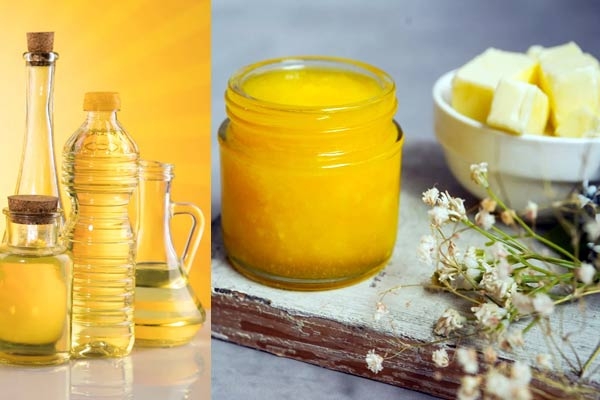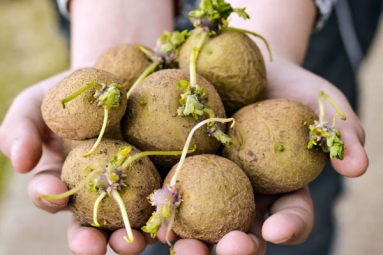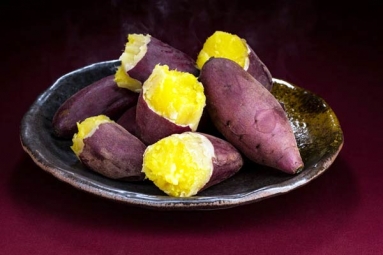
(Image source from: Canva.com)
Every Indian kitchen has its own special mix - oil, ghee, and butter. The scent of ghee on warm dal, the crunchy delight of snacks fried in oil, and the soothing experience of butter melting on parathas all contribute to the taste of home. But when it comes to health and flavor, how do you decide which one to pick? Is ghee truly better for you than butter? Is oil superior for frying? And what is the real difference among these three? Selecting the correct fat is not merely a cooking choice; it affects everything from the texture and nutrition of your food to your heart health over time. This guide explains the science, flavors, and applications of oil, ghee, and butter, assisting you in choosing the healthiest cooking fat for your kitchen. Fat is more than just a flavor enhancer. It influences texture, smell, and how your dish reacts to heat. The appropriate fat can:
Provide richness and complexity
Help your food brown nicely
Promote heart health if used correctly
Stop your food from burning based on its smoke point.
Oil, ghee, and butter all respond differently when heated. Knowing how they act is the first step to mastering your cooking.
Oil Advantages, Uses, and Best Types for Cooking:
Oil is derived from seeds, nuts, or fruits like sunflower, mustard, olive, coconut, and groundnut. It stays liquid at room temperature and comes in both refined and cold-pressed varieties.
Reasons to use it:
Oils from plants, such as olive and mustard, contain high levels of unsaturated fats, which are good for heart health. These oils can help lower bad cholesterol (LDL) and raise good cholesterol (HDL). According to a study in JAMA Internal Medicine, replacing butter with plant oils like olive, soybean, or canola can significantly reduce the risk of heart disease and lower overall mortality.
Refined oils may lose important nutrients during processing. Heating oils with low smoke points too much can also produce harmful substances like free radicals.
Best ways to use oil:
Deep Frying: Choose oils that have high smoke points like sunflower, rice bran, or groundnut.
Curries and Stir-Fries: Mustard oil is excellent for Indian recipes, while olive oil is perfect for Mediterranean dishes.
Salads and Dressings: Opt for extra virgin olive oil or cold-pressed sesame oil for raw applications.
Ghee Advantages, Uses, and Health Facts:
Ghee is clarified butter—heated until the milk solids separate, leaving behind pure golden fat. It is a common item in Indian households and Ayurveda, holding both cultural and health importance.
Reasons to use it:
Ghee has a lot of vitamins that dissolve in fat, like A, D, E, and K, and includes butyrate, which is good for your stomach health. It also can handle high temperatures well, which makes it perfect for cooking at high heat.
A research piece in the International Journal for Multidisciplinary Research showed that having ghee in moderation can lower total cholesterol and triglyceride levels, which goes against the belief that ghee is bad for heart health.
However, since it is still high in saturated fat, it's important to use it in moderation, especially when controlling cholesterol levels.
Best ways to use ghee:
Indian Cooking: Great for tadkas, biryanis, and rotis.
High-Heat Cooking: Ghee maintains its properties even when heated a lot.
Flavour Finish: Put a small spoon of ghee into dal or khichdi for a nice nutty smell.
Butter Benefits, Uses, And Limitations:
Butter is created by shaking cream until the fat separates from the liquid. It has fat and milk solids, giving it a rich and creamy feel. You can find it in salted and unsalted forms; butter brings that special richness we love in home baking and comfort foods.
Why use it:
Butter provides structure and taste to baked items. It also has vitamins and short-chain fatty acids that help your body produce energy.
Butter has a low smoke point, meaning it burns easily and is not good for deep frying. It has a lot of saturated fat, so a little goes a long way.
Best ways to use butter:
Baking: Crucial for cakes, cookies, and pastries since no other fat has the same flavor.
Spreads: Ideal for toast or parathas, giving a delightful melt.
Low-Heat Cooking: Perfect for making sauces, sautéing vegetables, and adding finishing touches.
Keeping fats stored correctly helps maintain their taste and nutrients, preventing them from spoiling.
Oils: Store in dark glass containers, away from light and heat. Don't reuse oil from deep frying.
Ghee: Keep in airtight containers at room temperature. Only refrigerate if it gets very warm.
Butter: Always keep it in the fridge. To make spreading easier, let a small amount sit at room temperature before using.
There isn't one fat that is the healthiest; it really depends on what you eat, how you cook, and your lifestyle.
For Heart Health: Stick with oils that contain unsaturated fats like olive, mustard, or rice bran.
For Gut Health and High-Heat Cooking: Ghee aids digestion and stays stable when heated.
For Baking and Flavor: Butter is the best choice when you're looking for richness and comfort.
In conclusion, balance is the key to everything. Even the healthiest fats can cause issues if you use too much. Use oils for your everyday stir-fries, ghee for those comforting Indian dishes, and butter when you want something cozy in your food. Your kitchen will appreciate it - and so will your body.







